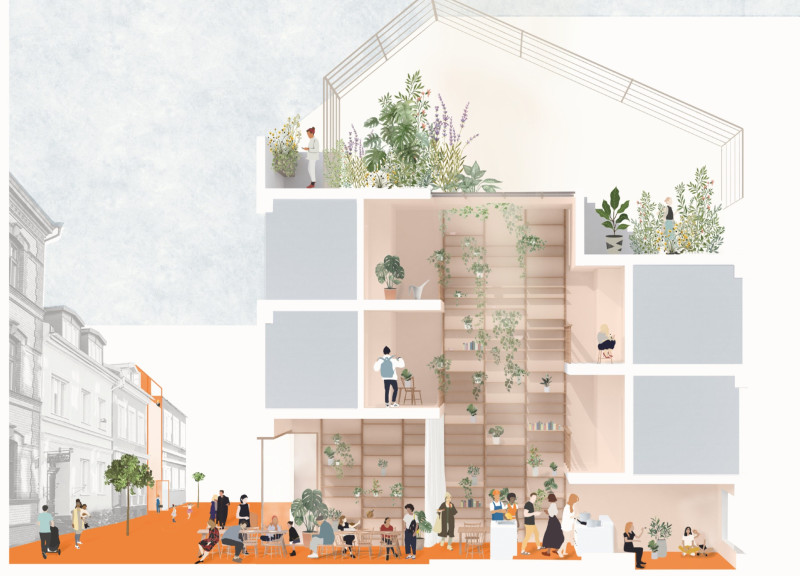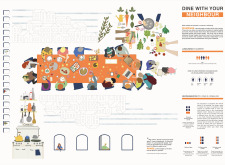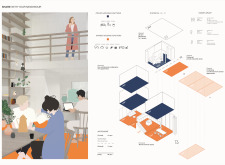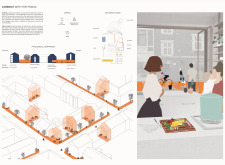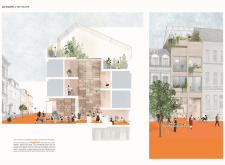5 key facts about this project
The design addresses the issue of loneliness in modern urban living by reimagining residential spaces that encourage community interaction. Located in an area with a significant number of one-person households, the concept focuses on shared spaces as essential elements that can foster social connections. The communal kitchen stands out as a key feature, reworking daily routines into chances for residents to engage with one another.
Communal Kitchen
A central aspect of the design, the communal kitchen is placed at ground level to make it easily accessible. This space is intended for cooking, dining, and gathering, creating opportunities for residents to come together. The kitchen's openness invites participation from both inhabitants and the surrounding community, establishing a lively environment that promotes social interaction.
Microhome Configuration
The project includes microhomes that are designed to maximize space for both private and shared activities. Each microhome accommodates two individuals and comprises essential facilities such as sleeping areas, bathing spaces, and storage solutions. This efficient design meets contemporary living needs while also blending private living with communal spaces. It caters to a wide range of residents, including young couples and older individuals looking for social connections.
Historical Inspiration
The design draws inspiration from historical communal living practices, especially those seen in the Medieval Ages, where shared spaces were fundamental to fostering community ties. By reflecting on these historical models, the design highlights the importance of social relationships in modern architecture. This perspective helps to create a thoughtful environment that encourages connections among residents.
While specific materials are not detailed in the presentation, it is expected that their selection would prioritize sustainability and practicality. The emphasis remains on creating spaces that support social interactions and directly respond to the challenge of urban isolation. An additional aspect is the potential integration of a greenhouse, which would provide residents with fresh produce and serve as another venue for community engagement.


